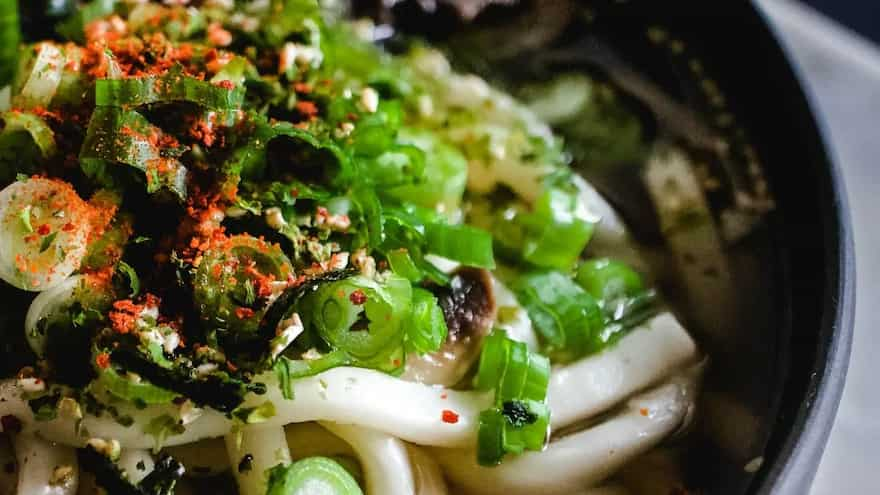Noodles have become one of the most widely appreciated staples in the world. The go-to for broke college students and for Michelin-starred chefs, the simple noodle has so much flavour and diversity to offer. There are dozens of different types of noodles available from rice flour noodles to hakka noodles, each with its own flavours, textures and applications, but one of the most enduring is the simple but delicious Udon Noodle.
Originating in China and then introduced to Japan in the 700s during the Tang Dynasty, the original Udon noodle was thought to be more similar to a dumpling than a noodle. In some parts of Japan, it’s still cut into squares rather than strands and the noodle shape we know today only became the standard by the 14th century.
More of a homestyle noodle than a restaurant staple the noodle is simple to make with just flour and salt being the main ingredients but the complexity lies in getting exactly the right thickness. Udon noodles are typically a bit thicker than the standard noodle with a more solid bite. This makes them more favourable as an addition to broths and stews where they can soak in all the flavours or as a dipping noodle where the larger surface area means more flavour per bite.
Some of the most common ways to serve Udon Noodles include:
Kake Udon
Simple but effective, the noodles are served in a broth called kakejiru which is made from soy sauce, dashi and mirin.
Miso Nikomi
A hearty, earthy stew, the miso soup is cooked with seasonal vegetables and the Udon Noodles are used to bulk up the humble dish.
Curry Udon
Japanese-style curry is a take on Indian curry and is very popular, especially for fast food. Here the noodles are coated in a thick curry roux before serving.
Udon Suki
A hot-pot style dish with a wide array of vegetables, mushrooms, pickles, leafy greens, meats and seafood with individual bowls of broth for dipping.
Yaki Udon
A street-style creation of stir-fried Udon noodles with soy, sesame oil and vegetables like spring onions and cabbage.
Though these are some of the more traditional serving choices, Udon Noodles are versatile and rough to take on any flavour. So go wild with your imagination and find the Udon for you.

Ingredients
- 1½ –2 cups water
- 3 tablespoons salt
- 8 cups all-purpose flour
- Cornstarch or potato starch, for dusting (optional: Use flour if you don’t have cornstarch or potato starch)
Method:
- In a large bowl or measuring cup, stir water and salt together to dissolve.
- On a clean work surface, pile the flour into a mound with a well in the centre.
- Slowly add water to the centre of the well, working it into the flour with your hands to form a stiff dough.
- Let the dough rest for 10 minutes.
- Knead dough until firm but smooth, about 5 minutes. If you find it difficult to knead, you can transfer the dough to a heavy-duty resealable plastic bag, leaving a gap for air to escape.
- Cover the dough with a clean, damp kitchen towel and let rest 2–8 hours, depending on the kitchen temperature (more time in a cold room, less time in a hot room).
- Dust a clean work surface with flour and use a rolling pin to roll dough into a rectangle ¼- to ⅛-inch thick, rotating dough as you knead. (Alternatively, use a pasta machine to roll dough.)
- With the short end of the rectangle facing you, dust dough with starch and fold, accordion-style, into quarters.
- Use a sharp kitchen knife to cut folded dough into ¼-inch-thick noodles. Lift noodles onto a chopstick inserted into the centrefold to lift.
- Bring a large pot of unsalted water to boil. Add noodles gradually, so that the water continues to boil. Cook until noodles are slightly more tender than al dente.
- Drain and rinse under cold running water, keeping the noodles separate by shaking the colander.
- Your Udon noodles are ready to serve.


